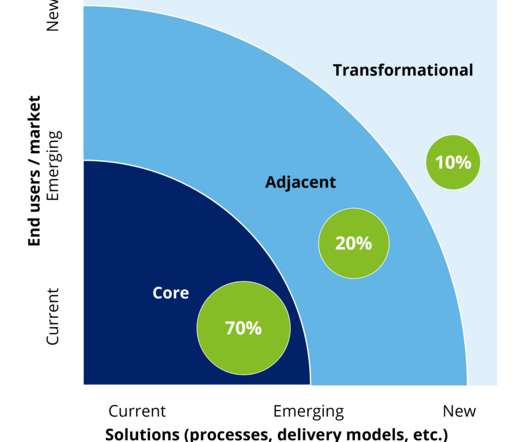Balancing your innovation portfolio: Does the 70-20-10 rule still apply?
Idea to Value
NOVEMBER 28, 2022
But what does a well-balanced innovation portfolio look like? One of industry standard answers comes from research by Deloitte Partners Bansi Nagji and Geoff Tuff, in their groundbreaking 2012 article in Harvard Business Review: Managing your innovation portfolio. The 70-20-10 ratio was always an average though.




















Let's personalize your content